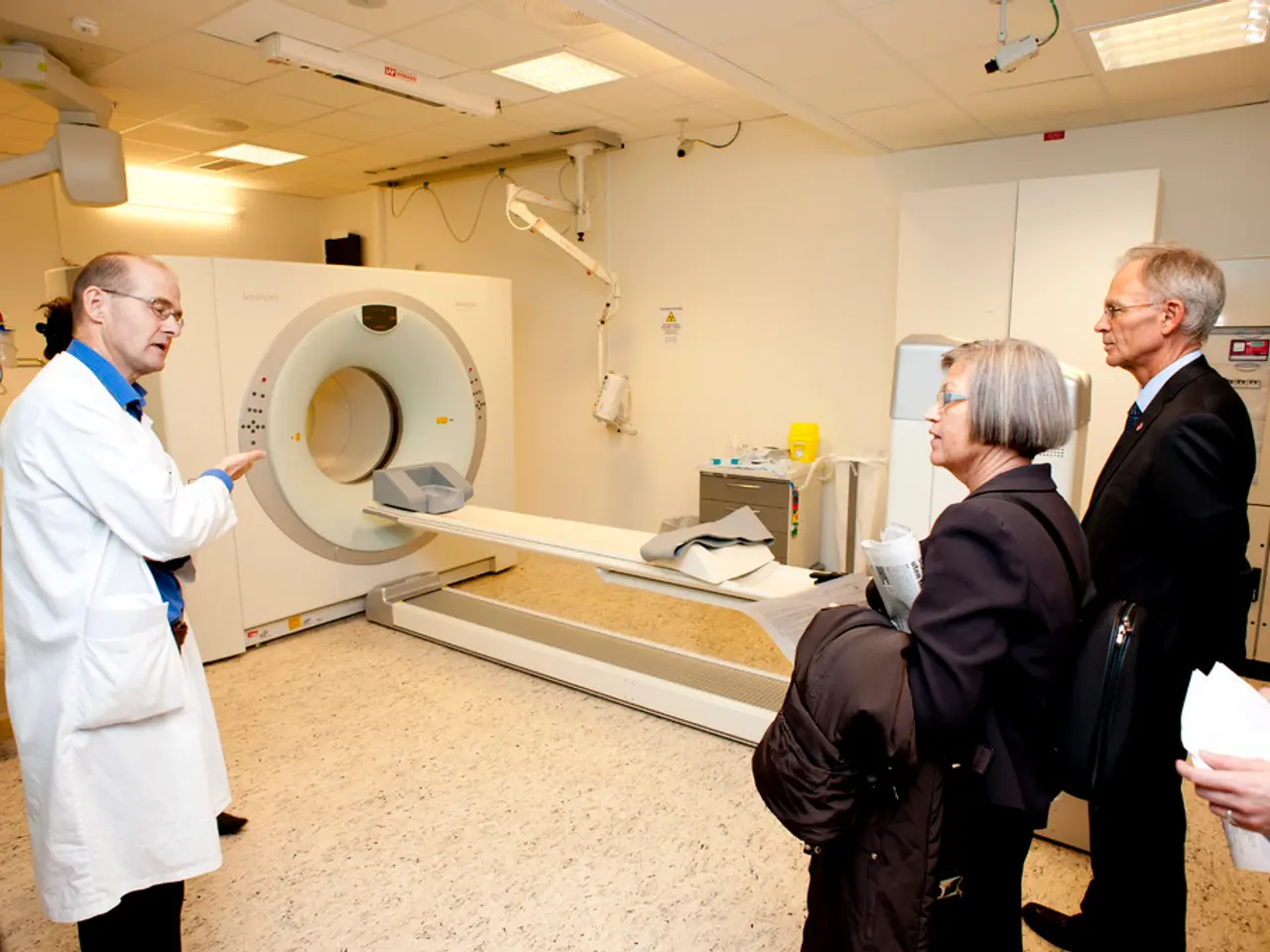Lymphoma Exploration: Examinations, Phases, and Expectations
Lymphoma, a type of cancer that affects the lymphatic system, requires a comprehensive diagnostic approach to determine its type and stage. The diagnostic procedures for lymphoma involve a combination of blood tests, biopsies, and imaging scans.
Blood Tests
Blood tests can provide valuable insights into the presence of lymphoma and its systemic effects. They may detect lymphoma cells or signs of infection associated with lymphoma, such as Epstein-Barr virus, HIV, or hepatitis C. Blood tests also measure lactate dehydrogenase (LDH) levels, which tend to be elevated in lymphoma patients and indicate disease activity.
Complete blood counts (CBC) may reveal abnormalities caused by lymphoma or its effects on blood cells. Blood chemistry tests, while not used alone to diagnose lymphoma, evaluate organ function and detect complications.
Biopsies
Tissue biopsy, preferably excisional or incisional, is critical for definitive diagnosis, histologic grading, and lymphoma subtype identification. Lymph node biopsy involves removing part or all of an affected lymph node to look for cancer cells. Bone marrow aspiration and biopsy collect fluid and solid tissue samples from the bone marrow to determine if lymphoma has spread to the marrow.
Laboratory analyses, including immunophenotyping and clonality testing, are performed on biopsy samples to identify the lymphoma cell type and classify the lymphoma subtype.
Imaging Scans
Imaging tests such as CT, MRI, PET, and ultrasound visualize the location, spread, and extent of lymphoma in the body. PET scans assess metabolic activity of lymph nodes and other tissues, helping distinguish active disease from scar tissue. These imaging outcomes assist in staging by identifying involved lymph nodes and extranodal sites, guiding treatment planning.
In some cases, doctors may use MRI scans if they are concerned about the disease spreading to the spinal cord or brain. A chest X-ray may be requested to look for possible causes of a person's symptoms.
Together, blood tests provide clues about disease presence and systemic effects, biopsies deliver cellular and molecular diagnosis to define lymphoma subtype, and imaging delineates disease extent and stage, enabling an integrated approach to lymphoma diagnosis and management.
It's important to note that the survival rate decreases as lymphoma spreads or progresses to more advanced stages. Seeking medical attention for any symptoms of lymphoma, including lymph node swelling, fever, unexplained weight loss, and night sweats, is crucial for early diagnosis and successful treatment. Certain chemotherapy drugs can affect the heart and lungs, so doctors may use echocardiograms and pulmonary function tests to assess function.
References:
[1] National Cancer Institute. (2021). Lymphoma - Non-Hodgkin. Retrieved 11 May 2021, from https://www.cancer.gov/types/lymphoma/hp/non-hodgkin-lymphoma-treatment-pdq
[2] Mayo Clinic. (2021). Lymphoma - Diagnosis and staging. Retrieved 11 May 2021, from https://www.mayoclinic.org/diseases-conditions/lymphoma/diagnosis-treatment/drc-20372706
[3] American Cancer Society. (2021). What Are the Key Points About the Diagnosis and Staging of Non-Hodgkin Lymphoma? Retrieved 11 May 2021, from https://www.cancer.org/content/dam/CRC/PDF/Public/8740.00.pdf
[4] American Cancer Society. (2021). Lymphoma - Hodgkin. Retrieved 11 May 2021, from https://www.cancer.org/content/dam/CRC/PDF/Public/8738.00.pdf
[5] Leukemia & Lymphoma Society. (2021). Diagnosis of Lymphoma. Retrieved 11 May 2021, from https://www.lls.org/lymphoma/understanding-lymphoma/diagnosis-of-lymphoma





